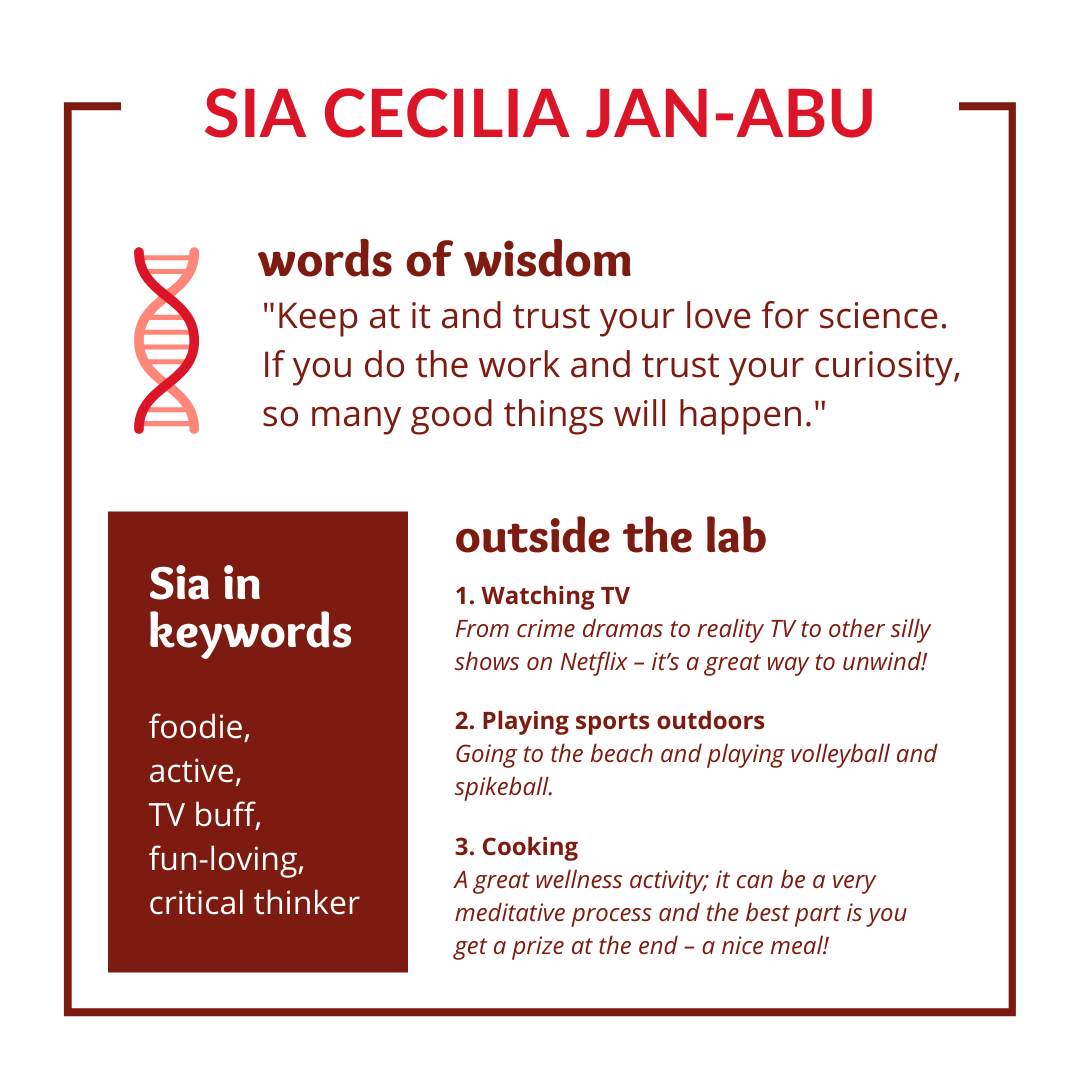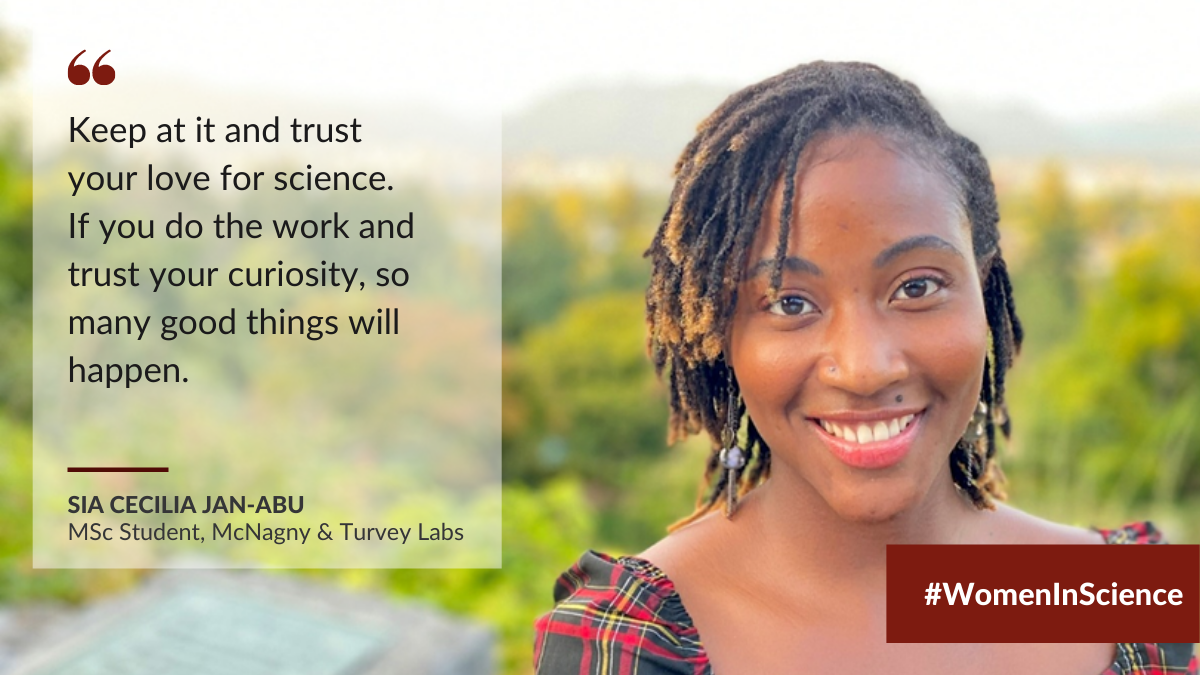
For Sia, one of the best things about being a scientist is being able to look at things from a critical lens, in order to uncover the truth.
For the International Day of Women and Girls in Science, we had the pleasure of speaking with women scientists at different points in their career, including Sia Cecilia Jan-Abu, a MSc Student in the McNagny Lab and Turvey Lab.
What are you researching?
I’m studying different mechanisms that lead to the development of allergies in children. In the McNagny Lab, we have several projects looking at perinatal allergy susceptibility – so whether allergies occur before birth or after birth, and which factors might lead to one child developing asthma or allergies, compared to another child who never develops either.
I started in the McNagny Lab as a Directed Studies student in my undergrad, looking at how an allergic phenotype affects muscle regeneration. This was particularly interesting to me, because I got to treat different mice strains with different types of antibiotics to make them allergic, and observe differences in muscle regeneration.
That study eventually gave birth to my current project. Now I’m looking at different markers that might indicate whether a child will develop an allergy, based on the prenatal environment and other environmental exposures during their early life.
Where does your scientific passion come from?
I’ve always been interested in science! From a young age, I wanted to be a doctor, because that was the only career path that seemed possible for me. I’m from Sierra Leone, and you’re usually studying to become either a doctor or a teacher at school there, especially as a girl.
But after coming to UBC, I realized that science is so much more than studying medicine. Doing research during my biochemistry undergrad made me realize that I really liked it, and I wanted to keep doing it.
At the start, I had a very limited understanding of what science is, but it’s been great to discover all these other, different scientific paths – for example, realizing that you can be a scientist and not work at a hospital, or that you can work as a scientist outside of an academic institution.
The most challenging part of being a scientist?
In a nutshell: project management.
As a research scientist in an academic setting, you are given many hats to wear. Deciding how much energy and effort you give to different projects is hard, especially if you love all of them.
There’s also a tendency to overwork if you enjoy what you’re doing, so balancing work with breaks and self-care to prevent burnout is extremely important.
“[B]alancing work with breaks and self-care to prevent burnout is extremely important.”
Your favourite thing about science?
The ability to look at things from a critical lens, as opposed to taking things at face value. Having a scientific mentality just enriches your life in so many ways, and that curiosity keeps your brain young!
Tell us more about this “scientific mentality”.
With a scientific perspective and background, you are trained to do the research, to look at data, to do the work, and to come to your own logical conclusions about why things are the way they are, instead of believing whatever is out there. That critical thinking is so important, especially in today’s age of misinformation and data misrepresentation.
What would you share with young girls interested in science?
On top of barriers for girls going into science, once you get into these fields, you don’t see a lot of people who look like you. Even if you do, they might not hold positions where you can see yourself in their shoes or following their career trajectory.
But don’t give up, stay curious! Keep at it and trust your love for science. If you do the work and trust your curiosity, so many good things will happen.
“Keep at it and trust your love for science. If you do the work and trust your curiosity, so many good things will happen.”
What is your parting message for readers?
Science is a really beautiful field to be in, and there’s so much that can be done in it. You always get results – whether the results are positive or not is another question, but it’s really rewarding to be part of the process.
Having the spirit of perseverance, determination and hard work will make it worthwhile. Stay curious, stay positive, and keep at it.
Thanks to Sia for sharing her story with us! February 11 is recognized by the United Nations as the International Day of Women and Girls in Science, which highlights the contributions of women in STEM and aims for full and equal access to participation in science, technology, and innovation for women and girls.
Read more stories from CBR women scientists, and learn about some of the challenges that women in STEM experience:
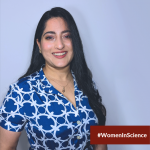
#WomenInScience: Dr. Chaahat SB Singh |
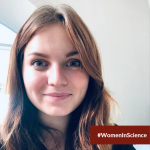
#WomenInScience: Tetiana Povshedna |
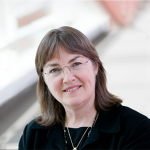
The CBR celebrates #WomenInScience Day 2021 |
“A Plug for the Leaky Pipeline” by Bronwyn Lyons |



